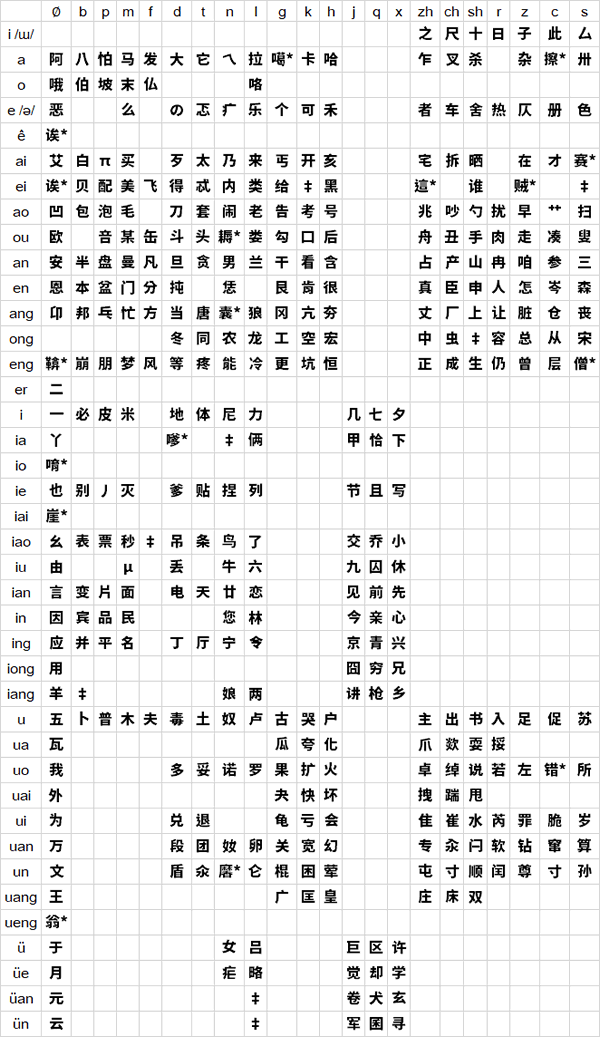Third-round Simplified Chinese (第三次汉字简化方案, or 三简字 for short) is a logosyllabary for Mandarin Chinese devised by Michael Chen. It introduces regularity to the pictophonetic principle of creating logographs, by choosing the phonetic component from a predefined syllabary table. Tone marks are optionally written over characters (_¯, _´, _ˇ_` and _˚ for the neutral tone).
It combines the advantages of phonemic alphabetic systems that make it easy to read and write, while maintaining the disambiguating power and meaning-based components that hanzi provide. It maintains continuity with current hanzi and is intuitively intelligible to native speakers.
When selecting characters for the syllabary table, characters that were simple, commonly used, unambiguously pronounced (i.e., not a 多音字), and with a relatively unified structural pattern were favored. For some syllables, the simplest character for that sound was still excessively complex, and many of these syllables were not common enough to justify having to learn such a complicated character. These are marked with an asterisk, and it is suggested to use Carl Buck's Zhongyinzi instead for the phonetic component. Syllables marked with a double dagger (‡) are nonstandard or obsolete. A handful of non-hanzi characters are used: の (de), π (pài), and μ (miù).
These characters in the syllabary table are then combined with radicals with a relevant meaning to create more complex characters. Commonly used characters with a relatively unified composition (e.g., 电、以、已、爱、金、再、合、而、儿) are carried over, but should not be used as a phonetic component for other characters.
Words are spaced as in pinyin.

Download a script chart for Third-round Simplified Chinese (Excel)

人人生而自由﹐在尊嚴和權利上一律平等。他們賦有理性和良心﹐並應以兄弟關係的精神互相對待。
Rénrén shēng ér zìyóu, ài zūnyán hé quánlì shàng yīlù píngděng. Tāmen fùyǒu lǐxìng hé liángxīn, bìng yīng yǐ xiōngdì guānxì de jīngshén hùxiāng duìdài.
All human beings are born free and equal in dignity and rights. They
are endowed with reason and conscience and should act towards one another
in a spirit of brotherhood.
(Article 1 of the Universal Declaration of Human Rights)
Information about Mandarin | Phrases | Numbers | Colours | Family words | Terms of endearment | Time | Weather | Tongue twisters | Tower of Babel | Articles | Links | Learning materials
Constructed scripts for: Ainu | Arabic | Chinese languages | Dutch | English | Hawaiian | Hungarian | Japanese | Korean | Lingala | Malay & Indonesian | Persian | Tagalog / Filipino | Russian | Sanskrit | Spanish | Taino | Turkish | Vietnamese | Welsh | Other natural languages | Colour-based scripts | Tactile scripts | Phonetic/universal scripts | Constructed scripts for constructed languages | Adaptations of existing alphabets | Fictional alphabets | Magical alphabets | A-Z index | How to submit a constructed script
[top]
You can support this site by Buying Me A Coffee, and if you like what you see on this page, you can use the buttons below to share it with people you know.

If you like this site and find it useful, you can support it by making a donation via PayPal or Patreon, or by contributing in other ways. Omniglot is how I make my living.
Note: all links on this site to Amazon.com, Amazon.co.uk
and Amazon.fr
are affiliate links. This means I earn a commission if you click on any of them and buy something. So by clicking on these links you can help to support this site.
[top]